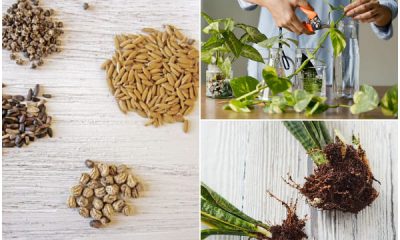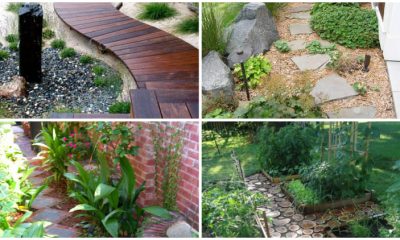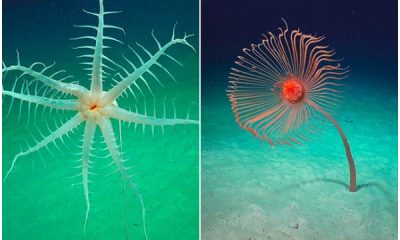GARDEN
Easy-to-grow Climbing Vegetables for Any Vertical Space

Want to grow more vegetables in the limited garden? Go for climbing vegetables! They are an easy solution to this dilemma. Learn about the list of Easy-to-grow Climbing Vegetables for Any Vertical Space that will provide you with bountiful crops without taking up too much space. Whether in any empty space, from walls, over trellises and tipis, and even along with wire supports, these veggies also work well. By choosing the right climbing and vining crops, the sky really is unlimited!
1. Pole Beans
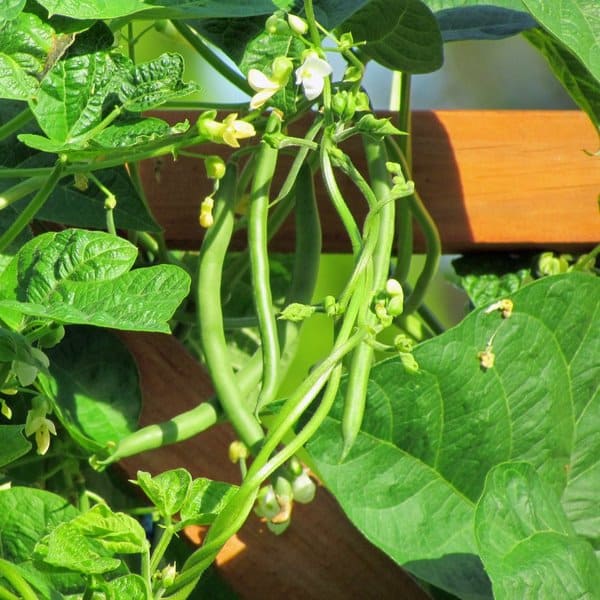 Image source: growjoy
Image source: growjoy
Pole Beans are reliable, productive, and easy to grow climbing vegetables. They are grown commonly in vertical gardens. They grow happily in a mild climate as long as get sturdy support, lots of light, and plenty of water. The best pole bean varieties are Scarlet Runner and Pole Beans you should choose.
2. Malabar Spinach
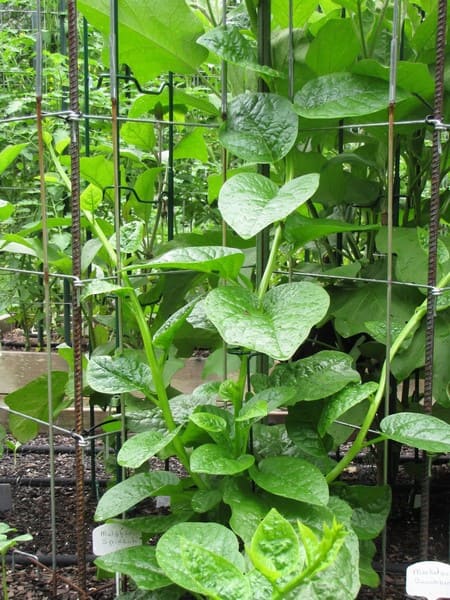 Image source: ugaoo
Image source: ugaoo
Malabar Spinach is classified as a tropical perennial, this vegetable grows best in milder climates. Red Stemmed Malabar variety is the most particularly productive, which is an easy-to-grow, cut-and-come-again vine that grows quickly. It can spread 4 feet in height and produces attractive glossy green leaves with red stems
3. Cucumber
 Image source: rurallivingtoday
Image source: rurallivingtoday
Cucumbers are climbing vegetables that do best in all vertical gardens as long as have enough support as their fruits develop. Dwarf varieties are suitable options for limited spaces. Marketmore 76, Mexican Sour Gherkin (Melothria Scabra), and Long English “Tasty Green” are the best varieties.
4. Hops
 Image source: practiganic
Image source: practiganic
Hops are fast-growing vines and are best grown in containers to prevent them from overtaking the garden. Hop flowers can be used to make beer or steeped to make sleep-inducing tea. In fact, there are also some people who eat them as vegetables.
5. Loofah (Luffa)
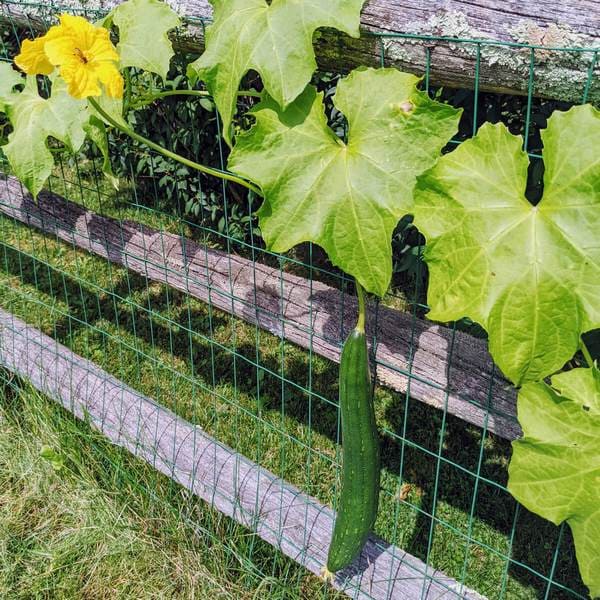 Image source: bunnysgarden
Image source: bunnysgarden
Loofah (Luffa) is better known as a natural sponge, but loofah gourds yield edible that can be cooked like squash. This vegetable thrives in warmer climates with well-draining soil and has enough support. It is also an interesting addition to any large container.
6. Peas
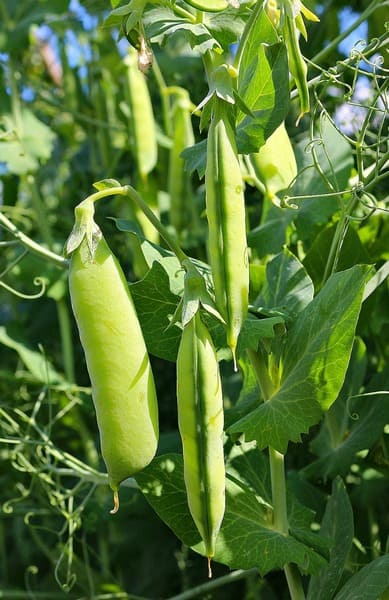 Image source: thegardeningcook
Image source: thegardeningcook
Peas are perennial, easy-to-care-for, heavy-cropping vegetables. They grow prolific and happily along trellising, wires, or any other support structure.
All climbing pea varieties will grow best in a vertical garden. California Black-Eyed Peas, Sugar Snap, English “Blue Pod Capuciners” are the most popular.
7. Pumpkin
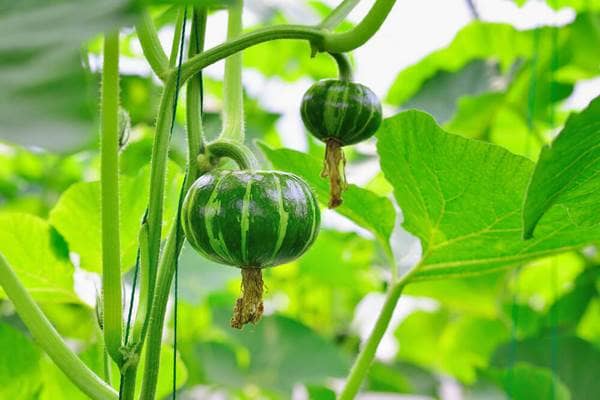 Image source: ellogggarden
Image source: ellogggarden
Small pumpkins can be grown in vertical gardens and do best with a hammock made of scraps of cloth to rest on. Applying this way, the plant will be able to hold the pumpkins, so they do not weigh the stalks down or fall. You should trim the vines of pumpkin plants when they reach around ten inches to remain manageable.
8. Tomatoes
 Image source: newscientist
Image source: newscientist
Tomatoes are the most popular variety of climbing vegetables. In a small space, you can grow both bush and vining tomato varieties, they also are trained to grow up a wall or trellis. Just give them enough support for optimum growth. they grow. Cherry or grape tomatoes are perfect options if you’re really short on space
Some of the best tomato varieties for a vertical garden such as Early Girl Bush, Big Boy, Tomato Burgess Climbing, or Honey Grape.
9. Melons and Watermelons
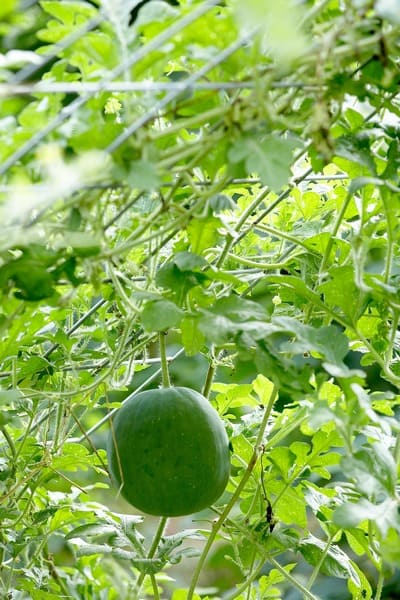 Image source: bhg
Image source: bhg
Although melons and watermelons aren’t generally thought of as climbing vegetables, there are many vining melon varieties. Most of them happily grow upwards as long as getting enough sturdy support.
The best options for a vertical garden include Red-Seeded Citron, Cantaloupe “Earlychamp”, Moon and Stars Watermelon, and Blenheim Orange Muskmelon.
10. Bitter Melon
 Image source: thewoksoflife
Image source: thewoksoflife
Bitter Melons are very bitter as the name suggests but they contain a high source of antioxidants.
They require hot and moist weather to grow best. This is why they are most suitable for tropical and subtropical areas. They are easy to take care of and can be trained comfortably on trellis and pergolas.
11. Lablab Beans
 Image source: thespruce
Image source: thespruce
Lablab Beans are also known as the Hyacinth bean, Seim bean, and Australian bean, they are native to South East Asia. They are short-living perennial that grows well in containers and grows the happiest in warmer growing conditions. Besides producing rich purple or pink flowers, the leaves of the plant are also edible.
12. Nasturtiums
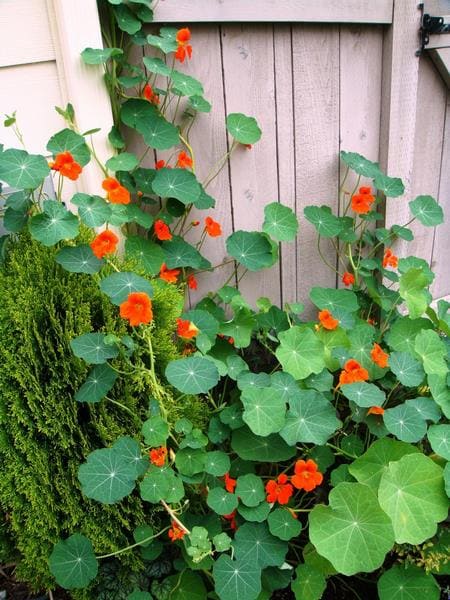 Image source: gardenmanage
Image source: gardenmanage
Nasturtiums aren’t just pretty to watch but are edible with great tastes. Apart from peppery petals, the young leaves of the plant are also edible. The flowers can be eaten and are ideal for decorating salads, soups, and desserts
Nasturtiums are quick-growing plants that can flower within just four weeks after planting. It can grow up to 6 feet and climb up trellises or poles or let them spill over balcony railings.
13. Chayote
 Image source: freepik
Image source: freepik
Chayote provides pear-shaped, pale green fruits that look like pumpkins. It grows best when trained up trellising and fencing.
This variety can grow well in subtropical to moderately cool climates without too much trouble. If grown in a cooler climate, it’ll need a bit more care. You can grow this vegetable in a large pot and move it indoors in the fall, or give it some form of warm winter protection.
GARDEN
15 Different Fern Types to Grow Indoors
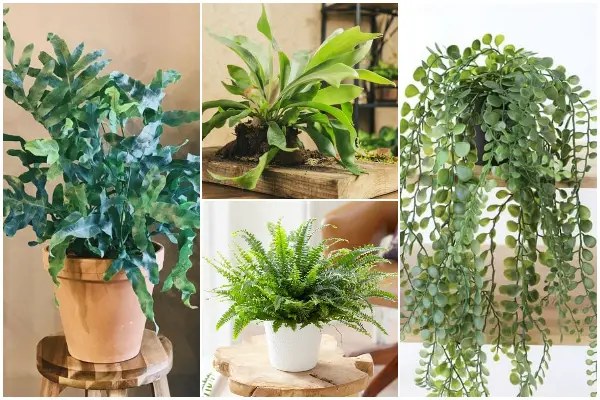
Want to bring tropical beauty to the home, indoor ferns are a lush and rewarding addition to any space. With vibrant, cascading fronds that stand out among other indoor plants, they are the top options for adding plant life and texture to your living space.
Here are the 15 Different Fern Types below that you will love growing. Like other houseplants, they also adapt to indoor conditions with minimal care.
#1 Kangaroo Fern (Microsorum diversifolium)
 Image source: rhsplants
Image source: rhsplants
Kangaroo Fern comes from Western Australia that features odd-shaped, long bright green fronds growing from creeping fuzzy rhizomes. To grow this fern, let’s give it moist soil and place it in a warm location.
#2 Boston Fern (Nephrolepis exaltata)
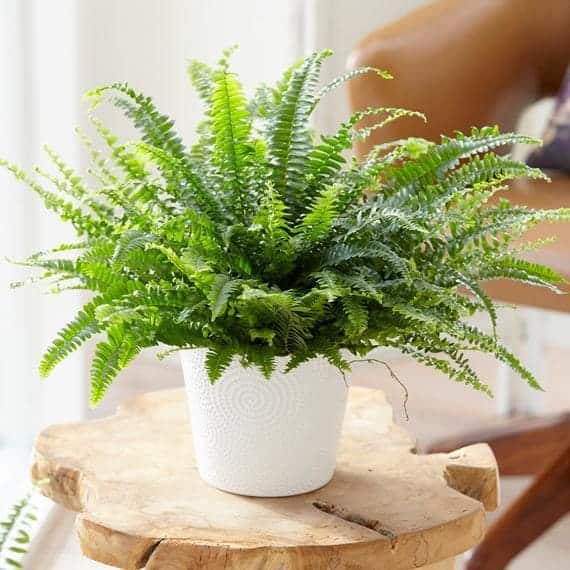 Image source: etsy
Image source: etsy
Boston Fern is also called the sword or ladder fern, it has blue-green sword-shaped fronds that stay evergreen with arching gorgeous erect leaflets. This plant grows well in low light and just with minimalistic attention.
#3 Botton Candy Boston Fern (Nephrolepis ‘Cotton Candy’)
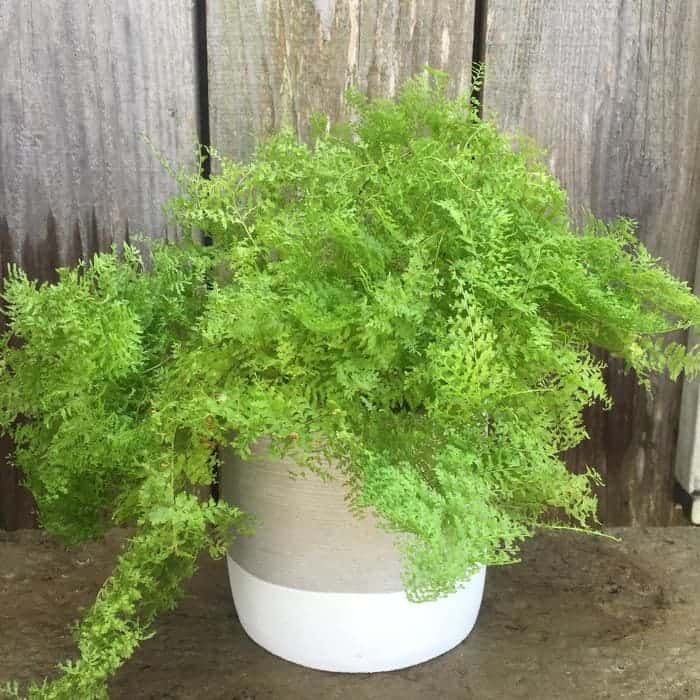 Image source: gatewaygardens
Image source: gatewaygardens
Cotton Candy Boston Fern does well both indoors and outdoors to show off fuzzy, soft, and bright green fronds. It looks great when grown in pots or hanging baskets. For its happy growth, give it in a shady location outdoors and on an Eastern direction window indoors.
#4 Bird’s Nest Fern (Asplenium nidus)
 Image source: springhillnursery
Image source: springhillnursery
Bird’s Nest Fern is an easy-care epiphyte variety as long as it gets enough humidity. In the right condition, it will bring leathery, strap-shaped, shiny, bright apple green fronds patterned in dark brown to black midribs and wavy edges.
#5 Blue Star Fern (Phlebodium aureum)
 Image source: instagram
Image source: instagram
Blue Star Fern is an epiphyte fern that adapts fast to the indoor environment. Its blue-green leaves are sometimes speckled with a silver or gray hue. To plant it indoors, give it well-draining soil, or an equal mix of perlite, pumice, or gravel.
#6 Lemon Button Fern (Nephrolepis cordifolia ‘Lemon Button’)
 Image source: brecks
Image source: brecks
Lemon Button Fern showcases tiny, golden-green round button-like leaflets. When grown in hanging baskets or in terrariums, its long, arching leaves give a stunning look. For its optimum growth, give it medium to bright light and high humidity.
#7 Squirrel’s Foot Fern (Davallia bullata)
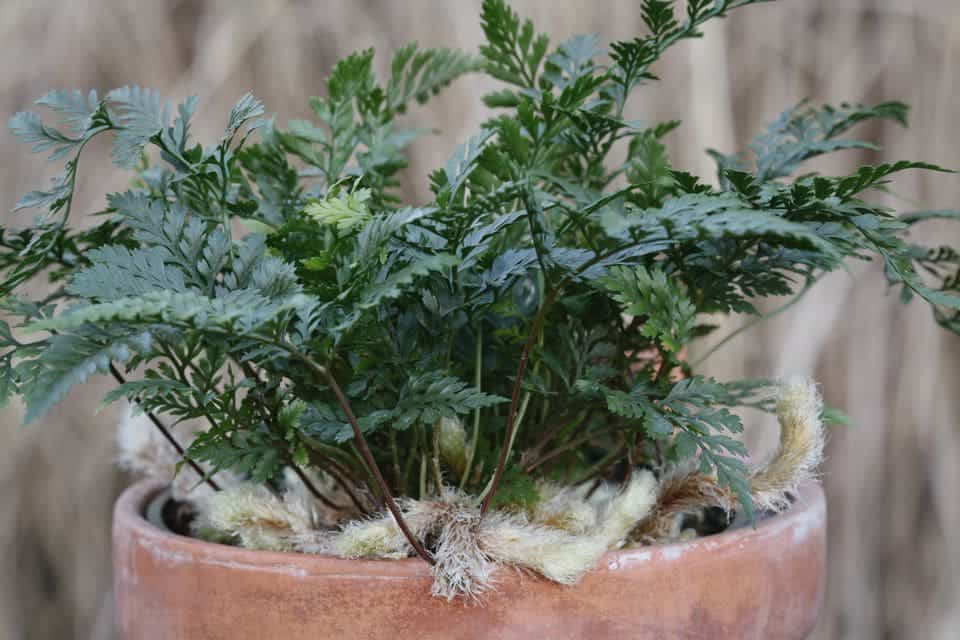 Image source: greencloudsolutions
Image source: greencloudsolutions
In the wild, the plant’s rhizomes of the Squirrel’s Foot Fern wrap around a tree to cling to them, hence the name. Place in indirect light and highly humid conditions, it will grow best to produce lacy and green foliage.
#8 Cretan Brake Fern (Pteris cretica)
 Image source: etsy
Image source: etsy
Native to Europe, Africa, and Asia, this evergreen fern has innate, flat green fronds with attractive variegation and wavy edges. The Cretan Brake Fern favors growing in a humid environment, so you can grow it in hanging baskets and place it in bathrooms or on tabletops.
#9 Maidenhair Fern (Adiantum)
 Image source: englishgardens
Image source: englishgardens
Maidenhair Fern is a popular fern that performs delicate, light, lacy, airy, bright green leaves on slender black stems, making it look great in hanging baskets. This fern variety requires slight moisture and bright indirect sunlight for its happy growth.
#10 Asparagus Fern (Asparagus aethiopicus)
 Image source: jensplantsandflorist
Image source: jensplantsandflorist
Asparagus Fern is one of the best hanging ferns that you can in baskets and macrame holders to enjoy its lacy-green foliage leaves. To grow this fern, give it humid locations and mist regularly, especially in summer.
#11 Japanese Holly Fern (Cyrtomium falcatum)
 Image source: plantify
Image source: plantify
Japanese Holly Fern shows off serrated, sharp-tipped long deep green leathery fronds that look like holly branches. This fern grows well both in partial sun and shade, so it thrives well indoors with minimum maintenance.
Native to New Zealand, the Button Fern is a beautiful, easy-to-grow fern. It displays round and small leaflets or ‘buttons’ on slim stems, hence the name. This fern variety adapts well to average indoor conditions.
#12 Rabbit’s Foot Fern (Humata tyermanii)
 Image source: hearthandvine
Image source: hearthandvine
Rabbit’s Foot Fern loves growing in bright, indirect light. It produces dark green, delicate, fine-textured fronds on fuzzy root-like stems (rhizomes).
#13 Staghorn Fern (Platycerium)
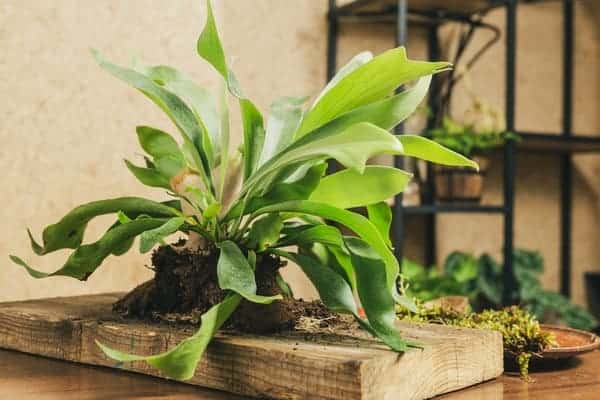 Image source: justhouseplants
Image source: justhouseplants
Staghorn Fern is a stunning epiphytic fern that offers exotic green fronds resembling the horns of an elk or male deer. It is easy to grow from propagating its side shoots or spores. It grows well in bright, indirect light, well-watered in a warm, and well-draining starter mix.
#14 Button Fern (Pellaea rotundifolia)
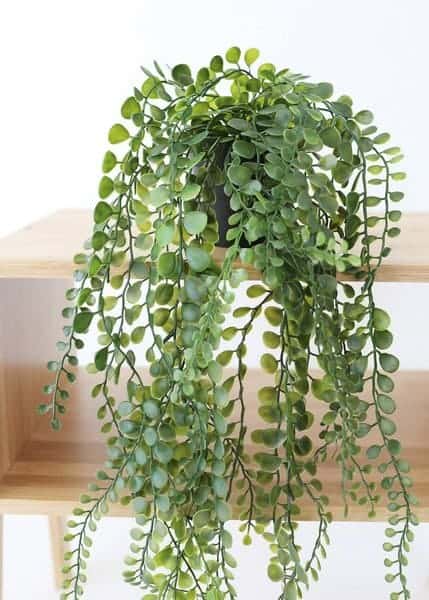 Image source: ifloralart
Image source: ifloralart
Native to New Zealand, the Button Fern is a beautiful and easy-to-grow plant. It produces round and small leaflets or ‘buttons’ on slim stems, hence the name.
#15 Christmas Fern (Polystichum acrostichoides)
 Image source: bigplantnursery
Image source: bigplantnursery
The fern variety offers glossy and green fronds that give the best color around Christmas time, so its name comes from this. Grow it in bright and indirect light for the best color. Also, water the plant once a week and keep the soil consistently moist.
GARDEN
15 Best Houseplants for Your Bathroom
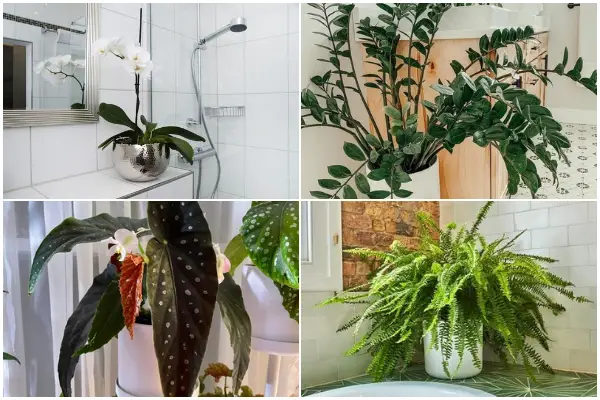
The bathroom is always the most cleaned in the house but it is missed in decoration. Most people also think that the area of the bathroom is small that can’t set any kind of decoration or apply sophisticated architecture. However, adding a green touch by growing some of the best bathroom plants below will give your bathroom a fresh look!
1. Cast Iron Plant
 Image source: plantvine
Image source: plantvine
This incredibly tough houseplant, which appears to thrive on neglect, certainly lives up to its name. The cast iron plant can survive low light, infrequent watering, and extreme heat.
Nevertheless, for best results place this potted plant in low to moderate light – keeping out of direct sunlight, and water it regularly, allowing it to dry out before re-watering.
The cast iron will happily thrive in temperatures from 50 to 85 degrees.
2. Dracaena
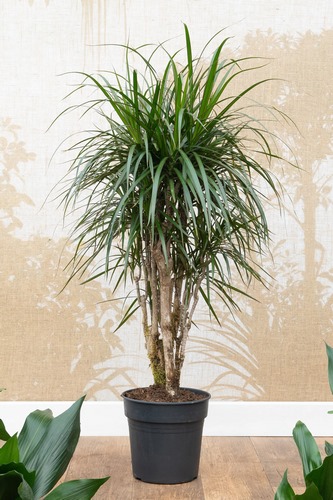 Image source: houseofplants
Image source: houseofplants
Dracaena plants, or dragon plants, are fantastic air purifiers which come in over 40 varieties.
This undemanding plant prefers light shade as its leaves will scorch if too bright; and a level of humidity not generally found in most rooms. Therefore, by placing your dragon plant in the bathroom, the lighting and humidity will prevent brown leaf tip and keep its greenery bright and flawless.
3. Orchid
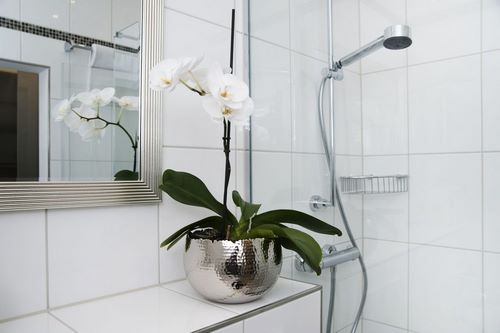 Image source: realsimple
Image source: realsimple
Give your bathroom a luxury spa feel with the addition of a subtle yet elegant orchid plant.
Place your orchid on the bathroom windowsill, where the indirect sunlight will provide adequate light but won’t cause leaf scorch; while the high humidity mirrors the flower’s natural environment.
It’s also a relatively compact flower making it perfect for smaller rooms, where it can be perched on the corner of the bathtub or next to the sink.
4. Pothos
 Image source: bobvila
Image source: bobvila
The golden pothos boasts beautiful marbled, heart-shaped leaves and is yet another low maintenance plant for your bathroom.
Ideal greenhouse conditions for this plant are very bright indirect light, high humidity, and warm temperatures.
However, as the bathroom ticks two out of three of these conditions, your pothos should do just fine indoors, although its leaves many not grow to the gigantic size they would with more light!
In order to stop the pothos getting out of control, and to save on space, hang it from the ceiling or high shelf.
5. Aloe Vera
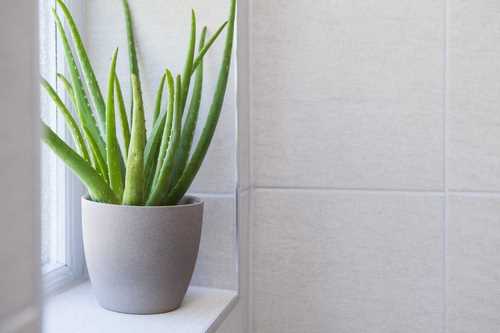 Image source: gardentabs
Image source: gardentabs
The aloe plant just keeps on giving! Not only is it known as the ‘plant of immortality’ because it is so difficult to kill, it is an incredibly useful plant to have around the home.
Aloe vera juice is bursting with vitamins and minerals, while the gel can be used as a topical treatment for minor cuts and burns, insect bites, dry skin and more.
This striking and healing plant should be placed close to the bathroom window and, because of its low water requirements, the humidity alone may meet most of its water needs!
6. Peace Lily
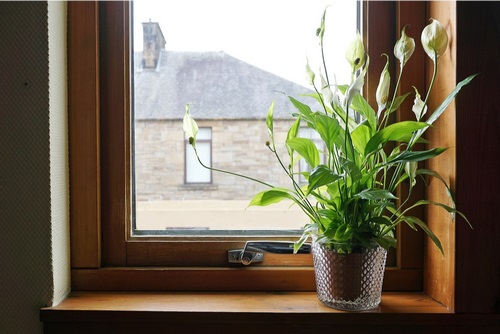 Image source: bustlingnest
Image source: bustlingnest
The peace lily is a striking flower, with glossy leaves and white blooms. It thrives in low light conditions, although it should be exposed to some indirect sunlight.
To simulate the natural humidity of the tropics, a daily misting or position next to a steamy shower is a must for the peace lily.
It’s another of NASA’s best plants for air purity, as it helps to filter out harmful benzene, trichloroethylene, and formaldehyde toxins.
7. Chinese Evergreen
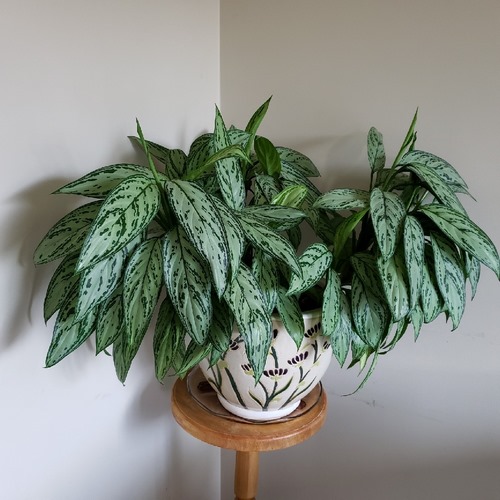 Image source: gardentags
Image source: gardentags
Boasting green leaves streaked with white or yellow, the tropical Chinese evergreen is one of the most durable plants you can grow, and has even been described as ‘almost foolproof’!
These plants thrive in medium to low light, or indirect sunlight. Although the Chinese evergreen prefers the warm temperatures and humid conditions of the bathroom, it’s flexible enough to tolerate other environments if necessary.
8. Philodendron
 Image source: sunrisespecialty
Image source: sunrisespecialty
This tropical indoor plant requires little in the way of care.
Philodendrons prefer the medium light intensity they would have on the jungle floor. If the light is too intense, its leaves will turn yellow; but if the leaves are widely spaced, it may need more light so you should consider installing fluorescent bulbs.
Although this hardy plant can tolerate average humidity, high levels promote lush, shiny foliage. Ideal growing temperatures are between 75 and 85 degrees F.
9. Bamboo
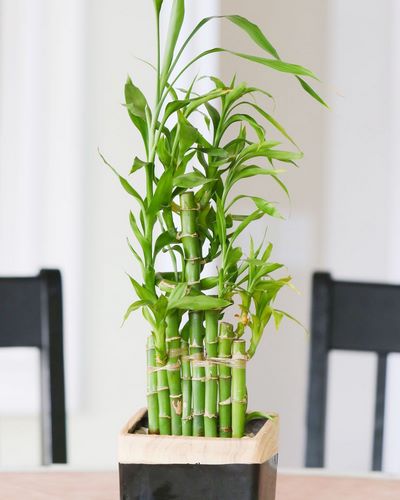 Image source: housebeautiful
Image source: housebeautiful
Lucky bamboo needs very little light to grow, and should be placed in low, indirect light.
It doesn’t even need any soil – simply pop the stalk into a container filled with pebbles and water. Change the water every two to four weeks.
Be warned that this is a fast growing plant, but you can curtail its growth by providing a physical barrier (such as a recessed shelf) or by shaping it regularly.
10. Snake Plant
 Image source: instagram
Image source: instagram
Also known as Mother-in-Law’s Tongue, the leaves of the snake plant grow upright, and feature yellow or white edging.
One of the hardiest houseplants, the snake plant can survive low light levels and is flexible in terms of heat and water.
The snake plant also filters some nasty household toxins from the bathroom air – including formaldehyde which can be found in cleaning products, tile grout, adhesives, and even some cosmetics!
11. ZZ Plant
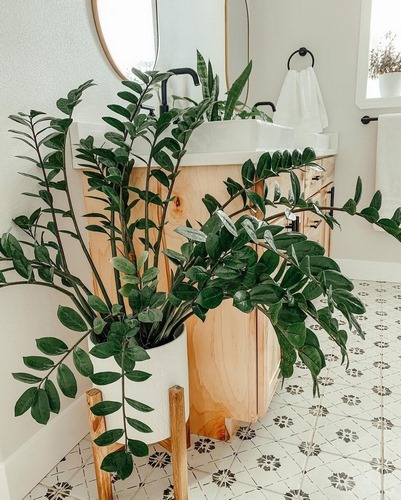 Image source: stylecurator
Image source: stylecurator
Dubbed the ‘eternity plant’ because it can tolerate quite a bit of neglect, the ZZ boasts beautiful oval-shaped, glossy leaves that will bring a fresh and vibrant feeling to any bathroom.
Although deep shade or direct sunlight don’t work for this plant, it can grow in most other light conditions such as a north, east or west facing window; and in a wide humidity range.
12. Spider Plant
 Image source: homedit
Image source: homedit
Commonly found in public spaces, the spider plant helps remove odors, fumes and around 90% of formaldehyde from the air.
This plant can grow in a wide range of conditions and requires little in the way of care. Because of this, they work well in bathrooms where they get either full sun or shade, although if plantlets fail to develop the plant is probably not getting enough light.
Allow the top layer of the soil to dry out between waterings.
13. Begonia
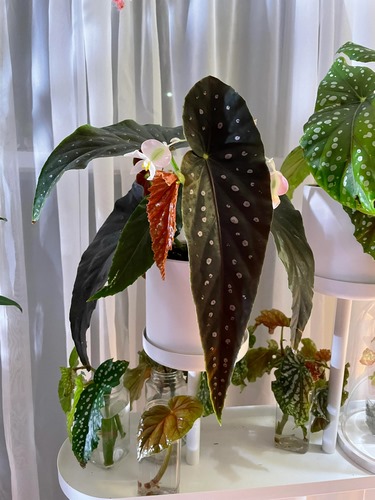 Image source: reddit
Image source: reddit
These pretty blooms do well indoors.
In fact, in many climates, they must be overwintered inside – with the bathroom being one of the best locations to do just this.
Begonias do best in fluorescent lighting, although they can survive when placed in window locations too (the exception being north-facing windows). They also require daily bathroom humidity or regular misting.
14. Ivy
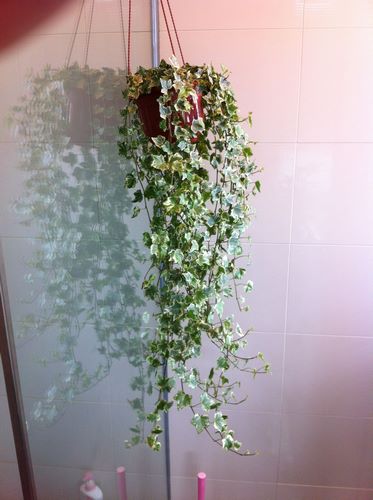 Image source: pinterest
Image source: pinterest
Ivy, particularly English Ivy, is one of NASA’s top air purifying plants. It can even help you keep the bathroom clean and hygienic by removing feces and mold from the surrounding air!
In bathrooms where space is at a premium, the ivy plant can be placed on a ledge or in a hanging basket where the leaves can elegantly trail down.
Needing just moderate exposure to sunlight, this evergreen vine enjoys the high humidity levels commonly found in bathrooms.
15. Boston Fern
 Image source: patchplants
Image source: patchplants
A popular variety of fern with frilly leaves and long, hanging fronds, the Boston fern is native to sub-tropical and tropical rain forests.
It grows best when placed on a windowsill or in a position which receives lots of indirect light. Humidity and temperatures of between 55 and 75 degrees are also important for your fern to thrive. In the growing months, the soil should be kept moist, but not saturated.
Other ferns also do well in bathrooms, including the Asparagus, Staghorn, and Bird’s Nest varieties.
FLOWERS
16 Best Beautiful Flowers That Grow Easily in Any Conditions

You are a beginner! You don’t know what kinds of flowers to choose between many types. Check out the flowers below, they are easy-to-grow, brightly-grown flowers, and also promise to liven up your outdoor spaces.
1 Lavender
 Image source: plantindex
Image source: plantindex
Lavender is a hardy plant that doesn’t require a whole lot of care once established. Lavender thrives in the sunshine and dry soil.
2 Calendula
 Image source: gardeningknowhow
Image source: gardeningknowhow
One of the easiest annual flowers to grow from seed, calendula, or pot marigold, is a bright and beautiful addition to any garden. It adapts well to a wide range of growing conditions and thrives in USDA Zones 2 to 8. This plant tolerates any type of soil, although it must drain well and this self-seeding plant prefers full sun to partial shade.
3 Pansies
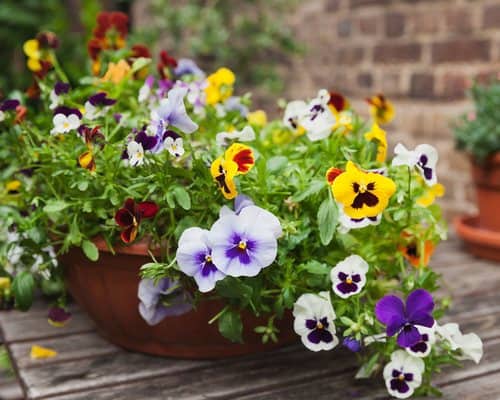 Image source: homesandgardens
Image source: homesandgardens
Pansies are so easy to nurture. It is a great recommendation for beginner gardeners. The pansy likes rich, well-drained soil, and full sun or partial shade. Deadheading the withered flowers is a must to encourage greater growth.
4 Dianthus
 Image source: americanmeadows
Image source: americanmeadows
There are many types of dianthus has a sweet and spicy smell similar to cinnamon or clove. They should be planted in full sun, with well-drained soil. Easily grown from seed.
5 Cosmos
 Image source: thisismygarden
Image source: thisismygarden
Cosmos is one of the easiest flowers to grow from seed. It prefers moist, well-drained soil that isn’t too rich, although it can grow in pretty poor soils too! Heat and drought-tolerant, the cosmos can grow anywhere between 18 and 60 inches tall depending on the variety.
6 Sunflowers
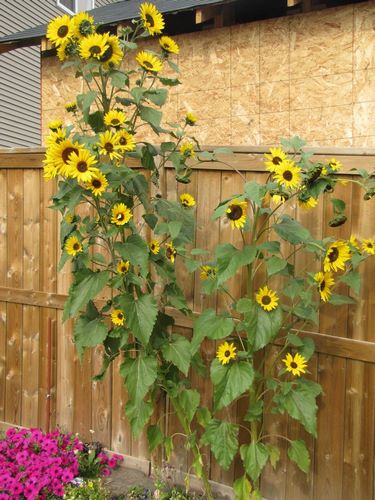 Image source: pinterest
Image source: pinterest
Sunflowers grow to between 6 and 16 feet tall, depending on the variety. Simply sow the seeds in a sunny, and sheltered spot. The hardy sunflower does well in most soil types (except waterlogged soil) and most varieties are tolerant to heat and drought. They attract bees and birds and will provide you with a bounty of seeds that are high in many essential nutrients like Vitamins E and B1, magnesium, and selenium.
7 Nasturtium
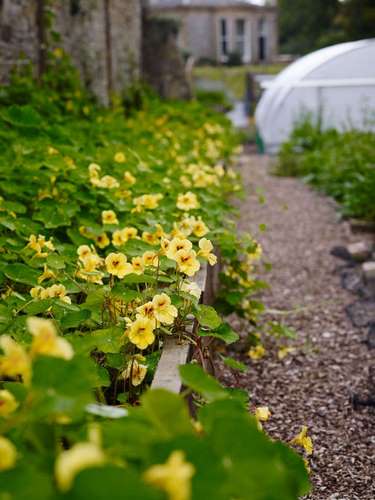 Image source: gardenista
Image source: gardenista
The fast-growing and colorful nasturtiums can be sowed directly into the ground. The only thing this low-maintenance plant will ask of you is regular hydration, let the soil dry between waterings, although the plant shouldn’t be parched.
8 Ornamental Alliums
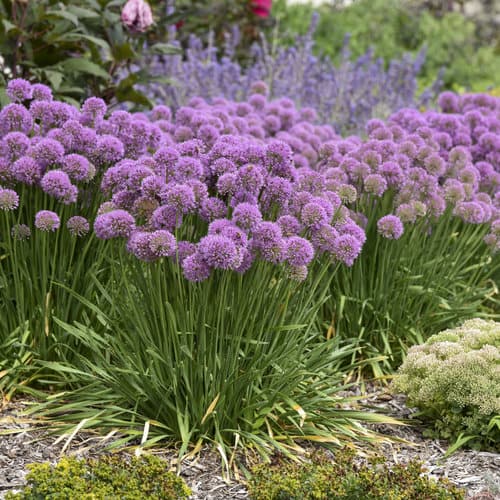 Image source: provenwinners
Image source: provenwinners
Ornamental alliums are hardy and undemanding so they should be grown in a sunlit area. They aren’t fussy about soil type, as long as it is well-drained; they don’t require much space and, best of all, they are relatively resistant to deer, voles, chipmunks, and rabbits!
9 Sweet Pea
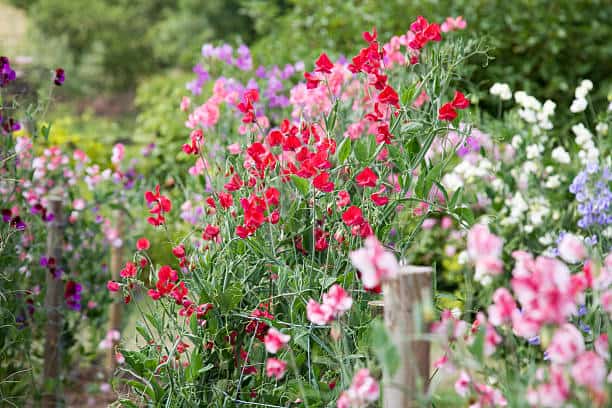 Image source: istockphoto
Image source: istockphoto
The beautifully scented sweet pea makes a wonderful addition to any garden, particularly as it requires so little care once established. Sweet peas like cool, but not cold, temperatures with their heads in the sun and their roots in cool, moist, and alkaline soil.
10 Marigold
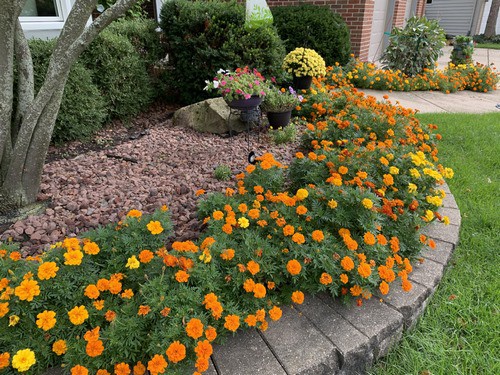 Image source: finegardening
Image source: finegardening
Marigolds are so very easy to grow. They grow quickly from seed. Sow them directly after the last frost in full sunlight (or up to a maximum of 20% shade). They are tolerant of dry, sandy soil, but don’t like to be overly damp.
11 Bachelor’s Button
 Image source: dengarden
Image source: dengarden
The Bachelor’s Button is low maintenance and thrives in poor, dry soil. Plant it in a position where it’s sure to receive morning sunlight, but partial shade during hot afternoons. It doesn’t require too much in the way of watering, but it becomes weak and floppy in soggy soil, and can also suffer stem rot and mildew.
12 Morning Glory
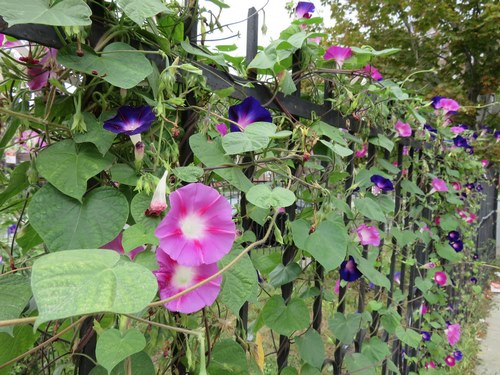 Image source: bbg
Image source: bbg
This plant is a hardy, quick-growing that requires little care! These annuals are self-seeding so you can enjoy them for years to come with minimal effort on your part. Perfect for covering walls and trellis, these beautiful purple, red, pink, or blue flowers flourish in full sun and moist, well-drained soil.
13 Hardy Geranium
 Image source: clcdesign
Image source: clcdesign
The hardy geranium is resistant to pests and disease, although they require well-drained, fertile, and moist soil. They prefer morning and afternoon sun and can handle partial shade well. Hardy geraniums are easy to grow from seed and even easier to cultivate from bare roots!
14 Lupines
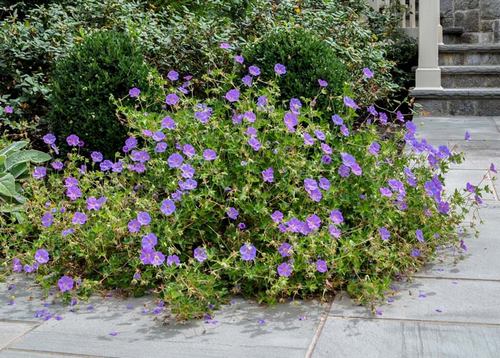 Image source: gardeningchannel
Image source: gardeningchannel
If you want to add color and texture to your garden bed, lupines are a great choice. Growing lupines is simple for everyone. Plant seeds or cuttings in a sunny area with average but well-drained soil. They do best in an area that hasn’t been amended by the application of compost or fertilizers.
15 Nigella
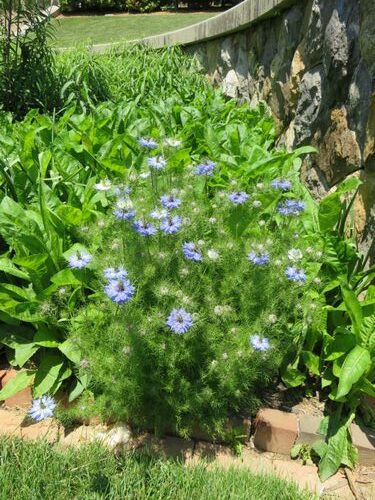 Image source: whatgrowsthere
Image source: whatgrowsthere
Nigella requires minimal maintenance, although it is a short-lived plant. It adapts to a variety of soil conditions, so it’s relatively easy to grow almost anywhere. For best results, sow your nigella seeds directly in the ground, in full sun to partial shade.
16 Fuchsias
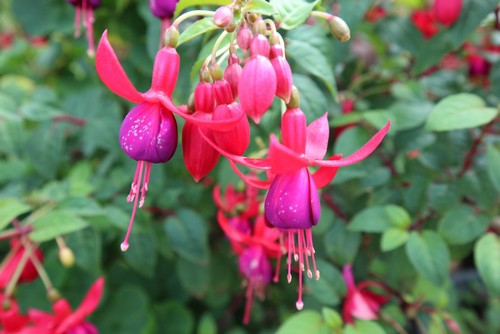 Image source: floraqueen
Image source: floraqueen
Fuchsias are beautiful and easy to grow, they bring a burst of color to the garden. With so many cultivars to choose from, you’ll have no problem finding one that suits your climate. To keep a healthy-looking plant, grow it in a shady location, and prune back weak and dead growth every so often to encourage new blooms.

 GARDEN1 năm ago
GARDEN1 năm ago4 Easiest Ways to Get Free Plants

 DIY & CRAFT1 năm ago
DIY & CRAFT1 năm ago17 Inexpensive DIY Garden Walkway Ideas

 ANIMALS11 tháng ago
ANIMALS11 tháng agoAbandoned Cat Finds Happiness in New Home Despite Being ‘Too Affectionate

 GARDEN1 năm ago
GARDEN1 năm ago8 Amazing Coca-Cola Uses

 BATHROOM1 năm ago
BATHROOM1 năm ago24 Creative and Unique Bathroom Sink Ideas

 FLOWERS1 năm ago
FLOWERS1 năm ago6 Best Flowers That Can Propagate Easily from Cuttings

 BATHROOM1 năm ago
BATHROOM1 năm ago30 Clever Ways to Use Plants In Your Bathroom

 ANIMALS9 tháng ago
ANIMALS9 tháng agoAmazing Video of Unseen Ocean Creatures in the Ningaloo Canyons







